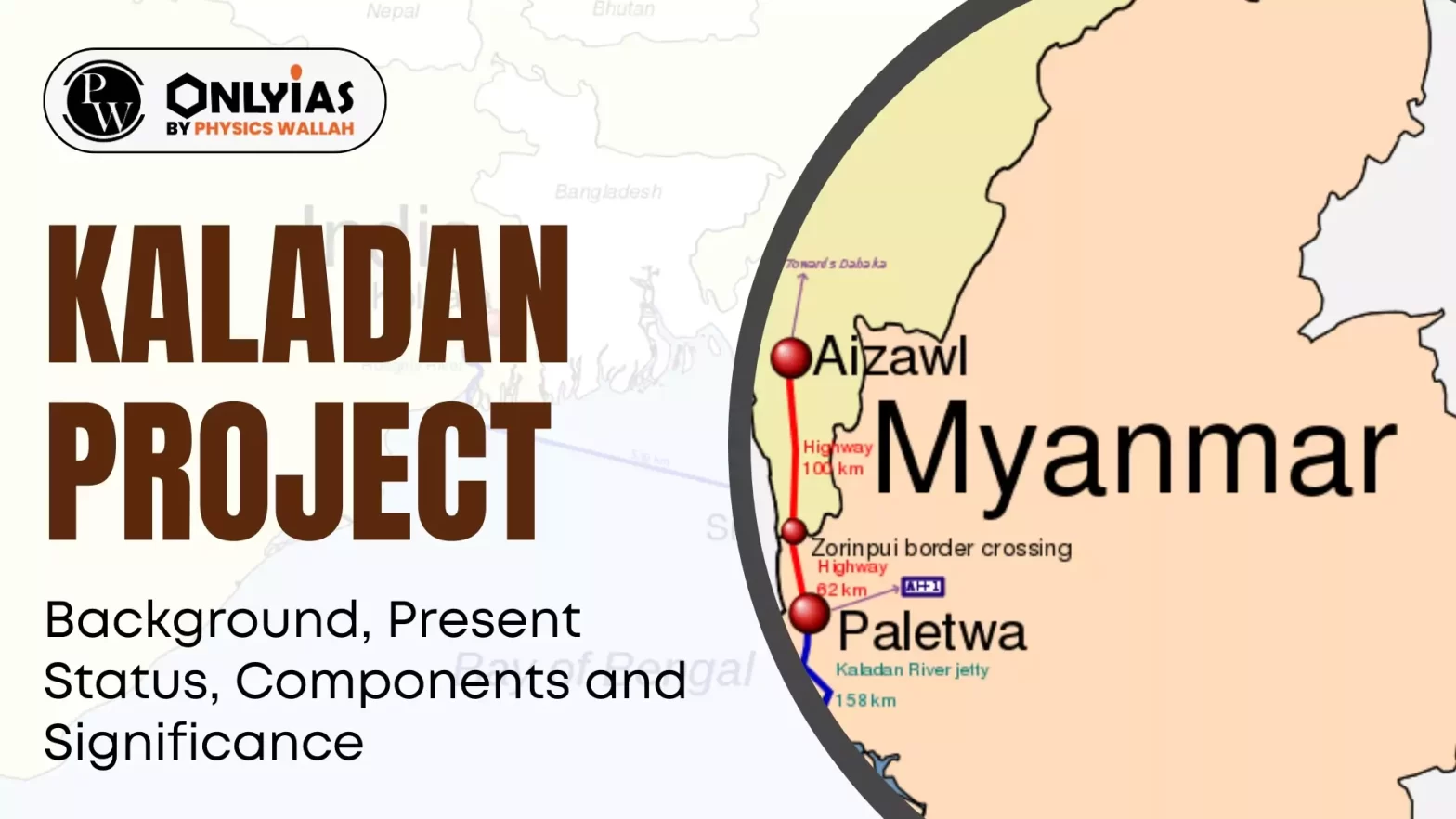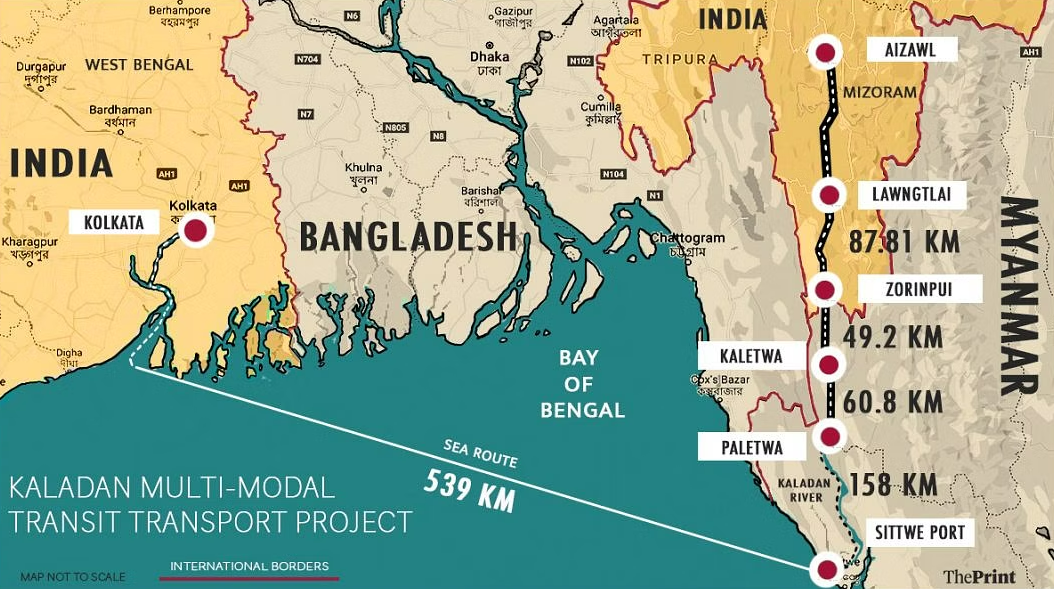![]() 9 Feb 2024
9 Feb 2024

This article is based on the news “Kaladan project of India ‘almost dead’ after Paletwa fell to Arakan Army: senior Myanmar Opposition leader” which was published in the Hindu. The Arakan Army, a rebel group in Myanmar, captured Paletwa (an important site in the Kaladan project) near the Mizoram border in January 2024, making the Kaladan project almost dead.
| Relevancy for Prelims: Kaladan Multi-Modal Transit Transport Project (KMTTP), Rakhine State, Myanmar Crisis, Myanmar Refugees, India-Myanmar Relation, ASEAN, and Act East Policy.
Relevancy for Mains: Kaladan Project: Background, Present Status, Components and Significance |
|---|

Kaladan Project Map
News Source: The Hindu
| Must Read | |
| NCERT Notes For UPSC | UPSC Daily Current Affairs |
| UPSC Blogs | UPSC Daily Editorials |
| Daily Current Affairs Quiz | Daily Main Answer Writing |
| UPSC Mains Previous Year Papers | UPSC Test Series 2024 |
<div class="new-fform">
</div>